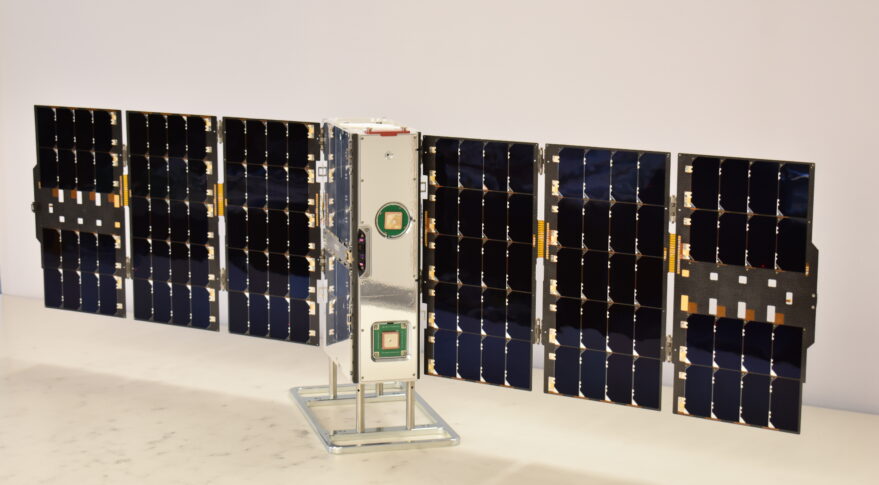An AMS satellite the size of a small box has been launched into space. It is designed to study the long–term use of vehicles in ultra-low orbits – from 200 to 300 km above the Earth.

Microsatellite from Blue Canyon
Among the 59 spacecraft launched on May 25 as part of the Transporter 5 mission was the AMS spacecraft from Blue Canyon. It has the size of a small box and is designed to test a long stay in low orbit. Engineers expect that it will be able to hold out for a long time at an altitude of 200 to 300 km above the Earth.
Developed for the Lincoln Laboratory of the Massachusetts Institute of Technology with funding from the US Air Force, the device is positioned as a high-altitude satellite. Experiments will begin with it in June.
Usually orbits below 300 km are not used. There are still many molecules of the Earth’s atmosphere here. Collisions with them slow down spacecraft. They lose speed, altitude and eventually fall to the ground. AMS should try to combat these phenomena with the help of experimental software and its engines.
Ultra-low orbits interest the military
The Blue Canyon satellite is also equipped with a laser beacon that allows it to determine its height and remote probing system with high accuracy. The electric propulsion Enpulsion NANO AR3 is used as a power plant.
The financing of the US Air Force project is not accidental. The military departments of the United States and Great Britain are preparing several more similar missions. The first of them, called CIRCE, will be launched this year and will be a pair of cubesats, also flying in a very low orbit. The second one, called Ouija, is just being developed by DARPA.
Both missions will study the conditions for the passage of signals in the ionosphere. It is here that the auroras arise. This is the outer layer of the earth’s atmosphere, in which high-energy particles coming to us from space are inhibited. It has unusual properties and the devices can be used both for very effective surface observation and for communication.
According to spacenews.com
Follow us on Twitter to get the most interesting space news in time
https://twitter.com/ust_magazine
